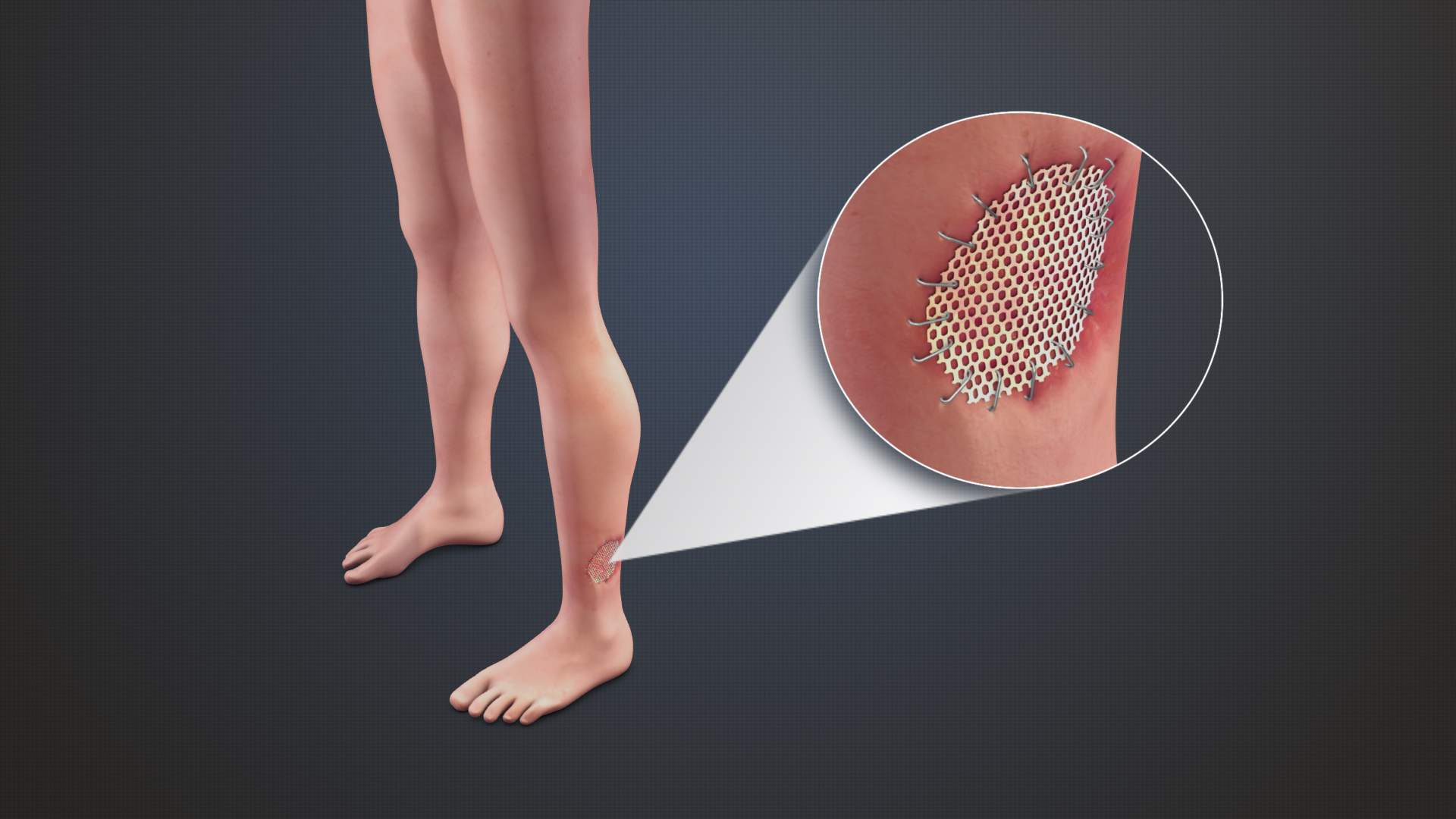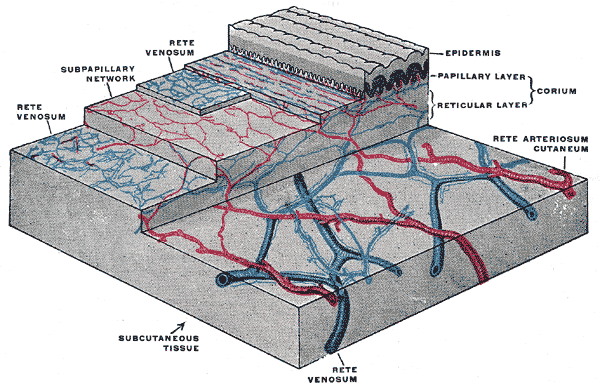|
Grafts
Grafting refers to a surgical procedure to move tissue from one site to another on the body, or from another creature, without bringing its own blood supply with it. Instead, a new blood supply grows in after it is placed. A similar technique where tissue is transferred with the blood supply intact is called a flap. In some instances, a graft can be an artificially manufactured device. Examples of this are a tube to carry blood flow across a defect or from an artery to a vein for use in hemodialysis. Classification Autografts and isografts are usually not considered as foreign and, therefore, do not elicit rejection. Allografts and xenografts may be recognized as foreign by the recipient and rejected. * Autograft: graft taken from one part of the body of an individual and transplanted onto another site in the same individual, e.g., skin graft. * Isograft: graft taken from one individual and placed on another individual of the same genetic constitution, e.g., grafts betw ... [...More Info...] [...Related Items...] OR: [Wikipedia] [Google] [Baidu] |
Bone Grafting
Bone grafting is a type of transplantation used to replace missing bone tissue or stimulate the healing of fractures. This surgical procedure is useful for repairing bone fractures that are extremely complex, pose a significant health risk to the patient, or fail to heal properly, leading to pseudoarthrosis. While some small or acute fractures can heal without bone grafting, the risk is greater for large fractures, such as compound fractures. Additionally, structural or morcellized bone grafting can be used in joint replacement revision surgery when wide osteolysis is present. Bone generally has the ability to regenerate completely but requires a very small fracture space or some sort of scaffold to do so. Bone grafts may be autologous (bone harvested from the patient's own body, often from the iliac crest), allograft (cadaveric bone usually obtained from a bone bank), or synthetic (often made of hydroxyapatite or other naturally occurring and biocompatible substances) with simi ... [...More Info...] [...Related Items...] OR: [Wikipedia] [Google] [Baidu] |
Skin Grafting
Skin grafting, a type of graft surgery, involves the transplantation of skin without a defined circulation. The transplanted tissue is called a skin graft. Surgeons may use skin grafting to treat: * extensive wounding or trauma * burns * areas of extensive skin loss due to infection such as necrotizing fasciitis or purpura fulminans * specific surgeries that may require skin grafts for healing to occur – most commonly removal of skin cancers Skin grafting often takes place after serious injuries when some of the body's skin is damaged. Surgical removal (excision or debridement) of the damaged skin is followed by skin grafting. The grafting serves two purposes: reducing the course of treatment needed (and time in the hospital), and improving the function and appearance of the area of the body which receives the skin graft. There are two types of skin grafts: * Partial-thickness: The more common type involves removing a thin layer of skin from a healthy part of the bod ... [...More Info...] [...Related Items...] OR: [Wikipedia] [Google] [Baidu] |
Xenograft
Xenotransplantation (''xenos-'' from the Greek meaning "foreign" or strange), or heterologous transplant, is the transplantation of living cells, tissues or organs from one species to another.Xenotransplantation Definition by the World Health Organization Such cells, tissues or organs are called xenografts or xenotransplants. It is contrasted with allotransplantation (from other individual of same species), syngeneic transplantation or isotransplantation (grafts transplanted between two genetically identical individuals of the same species), and [...More Info...] [...Related Items...] OR: [Wikipedia] [Google] [Baidu] |
Allograft
Allotransplant (''allo-'' meaning "other" in Ancient Greek, Greek) is the Organ transplant, transplantation of cell (biology), cells, Biological tissue, tissues, or Organ (anatomy), organs to a recipient from a genetically non-identical donor of the same species. The transplant is called an allograft, allogeneic transplant, or homograft. Most human tissue and organ transplants are allografts. It is contrasted with autotransplantation (from one part of the body to another in the same person), syngenic transplantation of isografts (grafts transplanted between two genetically identical individuals) and xenotransplantation (from other species). Allografts can be referred to as "homostatic" if they are biologically inert when transplanted, such as bone and cartilage.(W. P. Longmire, ''J. National Cancer Institute'' 14, 669: ''The term ''homostatic graft'' might be applied to inert tissues such as bone and cartilage when transferred from one individual to another of the same species; ... [...More Info...] [...Related Items...] OR: [Wikipedia] [Google] [Baidu] |
Hemodialysis
Hemodialysis, American and British English spelling differences#ae and oe, also spelled haemodialysis, or simply ''"'dialysis'"'', is a process of filtering the blood of a person whose kidneys are not working normally. This type of Kidney dialysis, dialysis achieves the extracorporeal removal of waste products such as creatinine and urea and free water from the blood when the kidneys are in a state of kidney failure. Hemodialysis is one of three renal replacement therapy, renal replacement therapies (the other two being kidney transplant and peritoneal dialysis). An alternative method for extracorporeal separation of blood components such as plasma or cells is apheresis. Hemodialysis can be an outpatient or inpatient therapy. Routine hemodialysis is conducted in a dialysis outpatient facility, either a purpose-built room in a hospital or a dedicated, stand-alone clinic. Less frequently hemodialysis is done at home hemodialysis, home. Dialysis treatments in a clinic are initiated ... [...More Info...] [...Related Items...] OR: [Wikipedia] [Google] [Baidu] |
Isograft
An Isograft is a graft of tissue between two individuals who are genetically identical (i.e. monozygotic twins). Transplant rejection between two such individuals virtually never occurs, making isografts particularly relevant to organ transplantations; patients with organs from their identical twins are incredibly likely to receive the organs favorably and survive. Monozygotic twins have the same major histocompatibility complex, leading to the low instances of tissue rejection by the adaptive immune system. Furthermore, there is virtually no incidence of graft-versus-host disease Graft-versus-host disease (GvHD) is a syndrome, characterized by inflammation in different organs. GvHD is commonly associated with bone marrow transplants and stem cell transplants. White blood cells of the donor's immune system which rema .... In 1993 a research article demonstrated that islet isografts were being transplanted into young diabetic mice TZ induced diabetic NOD miceand the mic ... [...More Info...] [...Related Items...] OR: [Wikipedia] [Google] [Baidu] |
Surgery
Surgery is a medical specialty that uses manual and instrumental techniques to diagnose or treat pathological conditions (e.g., trauma, disease, injury, malignancy), to alter bodily functions (e.g., malabsorption created by bariatric surgery such as gastric bypass), to reconstruct or alter aesthetics and appearance (cosmetic surgery), or to remove unwanted tissue (biology), tissues (body fat, glands, scars or skin tags) or foreign bodies. The act of performing surgery may be called a surgical procedure or surgical operation, or simply "surgery" or "operation". In this context, the verb "operate" means to perform surgery. The adjective surgical means pertaining to surgery; e.g. surgical instruments, operating theater, surgical facility or surgical nurse. Most surgical procedures are performed by a pair of operators: a surgeon who is the main operator performing the surgery, and a surgical assistant who provides in-procedure manual assistance during surgery. Modern surgical opera ... [...More Info...] [...Related Items...] OR: [Wikipedia] [Google] [Baidu] |
Burn (injury)
A burn is an injury to skin, or other tissues, caused by heat, electricity, chemicals, friction, or ionizing radiation (such as sunburn, caused by ultraviolet radiation). Most burns are due to heat from hot fluids (called scalding), solids, or fire. Burns occur mainly in the home or the workplace. In the home, risks are associated with domestic kitchens, including stoves, flames, and hot liquids. In the workplace, risks are associated with fire and chemical and electric burns. Alcoholism and smoking are other risk factors. Burns can also occur as a result of self-harm or violence between people (assault). Burns that affect only the superficial skin layers are known as superficial or first-degree burns. They appear red without blisters, and pain typically lasts around three days. When the injury extends into some of the underlying skin layer, it is a partial-thickness or second-degree burn. Blisters are frequently present and they are often very painful. Healing can ... [...More Info...] [...Related Items...] OR: [Wikipedia] [Google] [Baidu] |
Surgical Procedure
Surgery is a medical specialty that uses manual and instrumental techniques to diagnose or treat pathological conditions (e.g., trauma, disease, injury, malignancy), to alter bodily functions (e.g., malabsorption created by bariatric surgery such as gastric bypass), to reconstruct or alter aesthetics and appearance (cosmetic surgery), or to remove unwanted tissue (biology), tissues (body fat, glands, scars or skin tags) or foreign bodies. The act of performing surgery may be called a surgical procedure or surgical operation, or simply "surgery" or "operation". In this context, the verb "operate" means to perform surgery. The adjective surgical means pertaining to surgery; e.g. surgical instruments, operating theater, surgical facility or surgical nurse. Most surgical procedures are performed by a pair of operators: a surgeon who is the main operator performing the surgery, and a surgical assistant who provides in-procedure manual assistance during surgery. Modern surgical opera ... [...More Info...] [...Related Items...] OR: [Wikipedia] [Google] [Baidu] |
Autograft
Autotransplantation is the transplantation of organs, tissues, or even particular proteins from one part of the body to another in the same person ('' auto-'' meaning "self" in Greek). The autologous tissue (also called autogenous, autogeneic, or autogenic tissue) transplanted by such a procedure is called an autograft or autotransplant. It is contrasted with allotransplantation (from other individual of the same species), syngeneic transplantation (grafts transplanted between two genetically identical individuals of the same species) and xenotransplantation (from other species). A common example is the removal of a piece of bone (usually from the hip) and its being ground into a paste for the reconstruction of another portion of bone. Autotransplantation, although most common with blood, bone, hematopoietic stem cells, or skin, can be used for a wide variety of organs. One of the rare examples is autotransplantation of a kidney from one side of the body to the other ... [...More Info...] [...Related Items...] OR: [Wikipedia] [Google] [Baidu] |
Flap (surgery)
Flap surgery is a technique in plastic surgery, plastic and reconstructive surgery where Tissue (biology), tissue with an intact blood supply is lifted from a donor site and moved to a recipient site. Flaps are distinct from Graft (surgery), grafts, which do not have an intact blood supply and relies on the growth of new blood vessels. Flaps are done to fill a defect such as a wound resulting from injury or surgery when the remaining tissue is unable to support a graft, wound contraction is to be avoided or to rebuild more complex anatomic structures like breasts or jaws. Flaps may also carry with them tissues such as muscle and bone that may be useful in the ultimate reconstruction. Uses Flap surgery is a technique essential to Plastic surgery, plastic and reconstructive surgery. A flap is defined as tissue that can be moved to another site and has its own Circulatory system, blood supply. This is in comparison to a Skin grafting, skin graft which does not have its own blood su ... [...More Info...] [...Related Items...] OR: [Wikipedia] [Google] [Baidu] |







